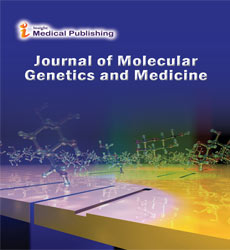Xeroderma pigmentosum in Algeria: Evidence for a prevalent founder effect
Received: May 12, 2022; Accepted: May 16, 2022; Published: May 20, 2022
Abstract
Xeroderma Pigmentosum (XP) is a rare autosomal recessive disorder characterized by hyperpigmentation, premature skin aging,ocular and cutaneous photosensitivity. XP patients present an inability to repair DNA damages caused by UV light, which increased risk of skin carcinoma. Seven genes has been described as defective in XP, are involved in the nucleotide excision repair (NER) pathway, defining the complementation groups XP A to G. The XP complementation group C (XPC) is the frequent disease-causing gene in North Africa with a unique frame shift mutation (c.1643_1644delTG or p.Val548Ala fsX23) responsible for an important proportion of cases. From a collection of 20 unrelated XP families, we obtained 58 DNA samples (19 index cases, 31 parents and 8 siblings suffering from XP) to validate a routine analysis which includes a specific amplification of a short region surrounding the 2 bp deletion using a fluorescent primer and fragment sizing (GeneScan Size) on a sequencing gel.Unambiguous determination was obtained in all the samples tested and three possible genotypes were identified (wild-type, heterozygous and homozygous for the deletion) Among the19 index cases, 17 were homoallelic for the 2bp deletion, their siblings were checked for the same mutation, and we found that they were also homoallelic for the 2bp deletion. Biallelism was confirmed by the analysis of both parents in most cases. Finally, the use of fragment sizing is the simplest method to analysis this 2 bp deletion for the DNA samples coming from countries where the mutation c.1643_1644delTG of XPC gene is the prevalent.
Open Access Journals
- Aquaculture & Veterinary Science
- Chemistry & Chemical Sciences
- Clinical Sciences
- Engineering
- General Science
- Genetics & Molecular Biology
- Health Care & Nursing
- Immunology & Microbiology
- Materials Science
- Mathematics & Physics
- Medical Sciences
- Neurology & Psychiatry
- Oncology & Cancer Science
- Pharmaceutical Sciences
